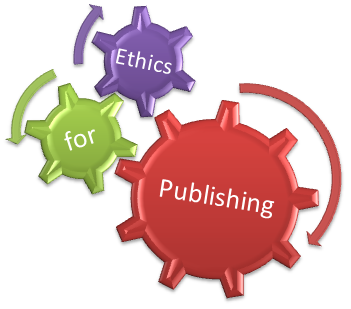Analysis of the Chemical Composition of Ash and Slag Waste from Solid Fuel Combustion for Sale as Raw Materials
(*) Corresponding author
DOI: https://doi.org/10.15866/ireme.v17i2.23166
Abstract
The Republic of Kazakhstan is taking active measures for the sustainable development of its economy. The key place in improving the sustainable model of economic development is occupied by the issues of energy efficiency and increasing energy conservation. The policy of efficient use of energy resources should lead to curbing the growth of their consumption and significantly reducing the level of environmental impact. Activities in this area will contribute to the modernization of industry, electric power, housing and utilities and transport sectors, stimulating the use of new technologies and innovations. The main type of fuel and energy resources of Kazakhstan is coal, which is supplied mainly from Ekibastuz, Karaganda and Kuznetsk deposits. The burning of organic fuel to produce electrical energy and/or heat is one of the foundations of the functioning of modern society and economy. On the other hand, fuel-burning plants consume many organic fuels of various types and other natural resources, converting them into useful energy. The functioning of these enterprises leads to the formation of a variety of waste and the entry of many pollutants into all natural environments. The main technogenic wastes of thermal power plants are ash and slag waste and flue gases. For the sale of fly ash and slag as raw materials and materials, for the safe storage and use of ash and slag waste in the national economy, in various industries, it is necessary to have basic information on their properties and characteristics: chemical composition, physical properties, mineralogical composition, physico-chemical properties, environmental characteristics, including such as radioactivity and toxicity. The use of ash and slag waste from thermal power plants brings the technology of thermal power plants to waste-free by 80%. This article presents the results of determining the chemical composition of ash and slag waste from thermal power plants in Almaty, the Republic of Kazakhstan for sale as raw materials. Examples of their use are also given.
Copyright © 2023 Praise Worthy Prize - All rights reserved.
Keywords
References
Bergenzhanova, G., Mauletuly, T., Adilbekov, A., Kokazhayeva, A., Revalde, G., Analysis of Conditions of Biofuel Production in Kazakhstan: Case Study, (2021) International Journal on Energy Conversion (IRECON), 9 (1), pp. 1-6.
https://doi.org/10.15866/irecon.v9i1.18479
Bergenzhanova, G., Mauletuly, T., Kokazhayeva, A., Increasing the Energy Supply of the Population of Remote Regions of the Republic of Kazakhstan with the Help of Compact Autonomous Bioenergy Plants, (2021) International Journal on Energy Conversion (IRECON), 9 (5), pp. 215-220.
https://doi.org/10.15866/irecon.v9i5.20751
Freewan, A., Kan'an, R., Assessment of Energy Efficiency of Retrofitting Existing Residential Buildings Using Multiple Energy-Saving Measures, (2021) International Journal on Energy Conversion (IRECON), 9 (4), pp. 125-139.
https://doi.org/10.15866/irecon.v9i4.20276
Nannan Wang, Xiyu Sun, Qiang Zhao, Ying Yang, Peng Wang, Leachability and adverse effects of coal fly ash: A review, Journal of Hazardous Materials, Volume 396, 2020, 122725, ISSN 0304-3894.
https://doi.org/10.1016/j.jhazmat.2020.122725
Kastiawan, I., Sutantra, I., Sutikno, S., Effect of Bottom Ash Treatment and Process Variables on the Strength of Polypropylene Composites, (2020) International Review of Mechanical Engineering (IREME), 14 (5), pp. 324-330.
https://doi.org/10.15866/ireme.v14i5.18804
A. Sanna, M. Uibu, G. Caramanna, R. Kuusik and M. M. Maroto-Valer, A review of mineral carbonation technologies to sequester CO2, Chem. Soc. Rev., 2014, 43, 8049-8080.
https://doi.org/10.1039/C4CS00035H
S.-Y. Pan, E. E. Chang and P.-C. Chiang, CO2 Capture by accelerated carbonation of alkaline wastes: a review on its principles and applications, Aerosol Air Qual. Res., 2012, 12, 770-791.
https://doi.org/10.4209/aaqr.2012.06.0149
Z. Wei, B. Wang, G. Falzone, E. C. La Plante, M. U. Okoronkwo, Z. She, T. Oey, M. Balonis, N. Neithalath, L. Pilon and G. Sant, Clinkering-free cementation by COy ash carbonation, J. CO2 Util., 2018, 23, 117-127.
https://doi.org/10.1016/j.jcou.2017.11.005
Junjie Zhang, Bo Liu, Xiaoyan Zhang, Hanlin Shen, Jun Liu, Shengen Zhang, Co-vitrification of municipal solid waste incinerator fly ash and bottom slag: Glass detoxifying characteristics and porous reformation, Ecotoxicology and Environmental Safety, Volume 243, 2022.
https://doi.org/10.1016/j.ecoenv.2022.113995
Yibin Wang, Liangyu Li, Qiwei An, Houzhang Tan, Meng Wang, Lihai He, Rui Sun, Guang He, Jianwei Yang, Investigation on ash fusion temperature and slagging characteristic of Zhundong coal blends, Part 1: The effect of two solid wastes from calcium carbide production, Fuel Processing Technology, Volume 228, 2022, 107138, ISSN 0378-3820.
https://doi.org/10.1016/j.fuproc.2021.107138
A.D. Kotelnikova, O.B. Rogova, E.A. Karpukhina, A.B. Solopov, I.S. Levin, V.V. Levkina, M.A. Proskurnin, D.S. Volkov, Assessment of the structure, composition, and agrochemical properties of fly ash and ash-and-slug waste from coal-fired power plants for their possible use as soil ameliorants, Journal of Cleaner Production, Volume 333, 2022, 130088, ISSN 0959-6526.
https://doi.org/10.1016/j.jclepro.2021.130088
Jun Hao, Zhi-he Dou, Ting-an Zhang, Kun Wang, Xing-yuan Wan, Song Qi, A clean and efficient utilization of fly ash with a focus on the strengthening decomposition mechanism of mullite, Fuel, Volume 333, Part 2, 2023, 126473, ISSN 0016-2361.
https://doi.org/10.1016/j.fuel.2022.126473
98/00338 Novel materials and products manufactured from ash-slag waste from thermal power plants, Fuel and Energy Abstracts, Volume 39, Issue 1, 1998, Page 28, ISSN 0140-6701.
https://doi.org/10.1016/S0140-6701(97)85611-1
Hadbaatar, N.A. Mashkin, N.G. Stenina, Study of Ash-Slag Wastes of Electric Power Plants of Mongolia Applied to their Utilization in Road Construction, Procedia Engineering, Volume 150, 2016, Pages 1558-1562, ISSN 1877-7058.
https://doi.org/10.1016/j.proeng.2016.07.111
S.K. Behera, D.P. Mishra, Prashant Singh, K. Mishra, Sujit K. Mandal, C.N. Ghosh, Ritesh Kumar, Phanil K. Mandal, Utilization of mill tailings, fly ash and slag as mine paste backfill material: Review and future perspective, Construction and Building Materials, Volume 309, 2021, 125120, ISSN 0950-0618.
https://doi.org/10.1016/j.conbuildmat.2021.125120
E.A. Yatsenko, B.M. Goltsman, V.I. Parshukov, Analysis of suitability of TPP ash-slag waste as materials for hydrogen fuel storageThis paper is the English version of the paper reviewed and published in Russian in International Scientific Journal for Alternative Energy and Ecology. ISJAEE, 382-384, #25-27 (2021), International Journal of Hydrogen Energy, Volume 47, Issue 6, 2022, Pages 3906-3917, ISSN 0360-3199.
https://doi.org/10.1016/j.ijhydene.2021.10.272
Renjuan Sun, Chen Fang, Hongzhi Zhang, Yifeng Ling, Jingjing Feng, Hui Qi, Zhi Ge, Chemo-mechanical properties of alkali-activated slag/fly ash paste incorporating white mud, Construction and Building Materials, Volume 291, 2021, 123312, ISSN 0950-0618.
https://doi.org/10.1016/j.conbuildmat.2021.123312
Aditya Chowdhury, Aliya Naz, Abhiroop Chowdhury, Waste to resource: Applicability of fly ash as landfill geoliner to control ground water pollution, Materials Today: Proceedings, Volume 60, Part 1, 2022, Pages 8-13, ISSN 2214-7853.
https://doi.org/10.1016/j.matpr.2021.10.367
Hongqiang Ma, Chao Wu, Mechanical and microstructural properties of alkali-activated fly ash-slag material under sustained moderate temperature effect, Cement and Concrete Composites, Volume 134, 2022, 104744, ISSN 0958-9465.
https://doi.org/10.1016/j.cemconcomp.2022.104744
Y. Luo, S.H. Li, K.M. Klima, H.J.H. Brouwers, Qingliang Yu, Degradation mechanism of hybrid fly ash/slag based geopolymers exposed to elevated temperatures, Cement and Concrete Research, Volume 151, 2022, 106649, ISSN 0008-8846.
https://doi.org/10.1016/j.cemconres.2021.106649
Sukri, M., Rahman, A., Tahir, M., Razak, J., Achieving Energy Cost Saving Using Best Energy Tariff: a Case Study of a Sewage Plant, (2021) International Review of Electrical Engineering (IREE), 16 (1), pp. 68-77.
https://doi.org/10.15866/iree.v16i1.19067
Zhangabay, N., Abshenov, K., Bakhbergen, S., Zhakash, A., Moldagaliyev, A., Evaluating the Effectiveness of Energy-Saving Retrofit Strategies for Residential Buildings, (2022) International Review of Civil Engineering (IRECE), 13 (2), pp. 118-126.
https://doi.org/10.15866/irece.v13i2.20933
Orjuela Abril, S., Acevedo, C., Cardenas Gutierrez, J., Computational Fluid Dynamics Analysis of Combined Cycle Power Plant Heat Exchanger with OpenFOAM® Software, (2020) International Review on Modelling and Simulations (IREMOS), 13 (5), pp. 319-328.
https://doi.org/10.15866/iremos.v13i5.18891
Refbacks
- There are currently no refbacks.
Please send any question about this web site to info@praiseworthyprize.com
Copyright © 2005-2024 Praise Worthy Prize








